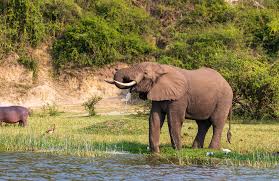Uganda, celebrated for its remarkable biodiversity, hosts a vast array of wildlife. From the majestic mountain gorillas to the elusive leopards, Uganda’s wildlife is a treasure trove of natural wonders. However, the increasing threats of habitat loss, poaching, and climate change necessitate robust conservation efforts to protect these invaluable resources. This blog explores the critical role of conservation initiatives in preserving Uganda’s wildlife.
National Parks and Protected Areas
One of the most effective conservation strategies in Uganda is the establishment of national parks and protected areas. Uganda boasts ten national parks, including the renowned Bwindi Impenetrable Forest and Murchison Falls National Park. These parks serve as sanctuaries for diverse species, offering them a safe haven from human encroachment and poaching. By maintaining these protected areas, Uganda ensures that its wildlife can thrive in their natural habitats.
Anti-Poaching Initiatives

Poaching remains a significant threat to the wildlife in Uganda. To combat this, the Ugandan government, in collaboration with various non-governmental organizations, has implemented stringent anti-poaching measures. These include increased patrolling, better training for park rangers, and the use of advanced technology such as drones and GPS tracking to monitor wildlife movements and detect poaching activities. These efforts have significantly reduced poaching incidents, helping to stabilize populations of endangered species.
Community Involvement and Education
Engaging local communities in conservation efforts is crucial for the sustainable preservation of wildlife. Initiatives that involve communities living near protected areas have been particularly successful. Programs that promote eco-tourism provide alternative livelihoods, reducing the reliance on activities that harm wildlife. Additionally, educational campaigns raise awareness about the importance of conservation, fostering a sense of responsibility among locals to protect their natural heritage.
Rehabilitation and Breeding Programs

Rehabilitation centers and breeding programs play a vital role in conserving Uganda’s wildlife. Organizations such as the Uganda Wildlife Conservation Education Centre (UWEC) rescue and rehabilitate injured or orphaned animals, preparing them for re-release into the wild. Breeding programs for critically endangered species, like the northern white rhino, aim to increase population numbers and ensure genetic diversity.
International Collaboration
Conservation is a global effort, and Uganda benefits from international partnerships. Collaborations with organizations such as the World Wildlife Fund (WWF) and the International Union for Conservation of Nature (IUCN) bring in much-needed funding, expertise, and resources. These partnerships enhance Uganda’s capacity to protect its wildlife through research, conservation programs, and policy development.
Conclusion
Uganda’s wildlife is a national treasure, and its preservation is of utmost importance. Through a combination of efforts, Uganda is making significant strides in conservation. These efforts ensure that future generations can continue to experience the rich biodiversity that makes Uganda so unique. By supporting and enhancing these conservation strategies, we can help safeguard the future of Uganda’s wildlife.

Leave a Reply